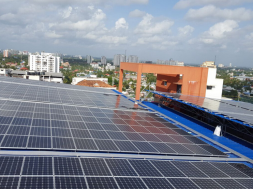
IFC, a member of the World Bank Group, partnered with Eversheds to host a series of workshops in June on Southeast Asia’s renewable future to highlight the region’s energy needs and private sector investment potential. Over 150 people attended the knowledge sharing events in Singapore and London which provided energy stakeholders with a vision of increased electrification rates and diversified energy sources. Currently, the region’s access to electricity varies widely by country and power source. “In Southeast Asia, countries are at different levels of development in terms of renewables,” said Hemant Mandal, IFC’s Senior Energy Specialist, East Asia Pacific. “There is lots of interest from investors, developers and stakeholders to enter and engage in this market.”
Together with strategic partners Savills, Wind Prospect, IRENA and Ernst and Young, IFC held workshops to address power supply gaps, energy security and diversification to serve regional needs and meet COP21 commitments for mitigating climate change. “We are seeing an increasing focus from our clients on Southeast Asia. The region presents some interesting opportunities but it is not without some quite specific challenges,” said Michelle T Davies, partner at Eversheds. “The main purpose of our event was to bring developers, investors, funders and governments together to help provide an expert analysis on the markets that present growth opportunities at scale while identifying current obstacles.”
IFC’s focus within the region is on assisting International Development Association (IDA) countries to help end extreme poverty and boost shared prosperity. In East Asia Pacific alone, there are 15 IDA countries including Myanmar, Cambodia and Lao PDR. Myanmar has one of the lowest electrification rates in the region at 35 percent. For greater domestic supply, the country is exploring hydro, solar and wind energy generation, in addition to fossil fuels. Cambodia’s energy access is currently 55 percent with government targets of full electrification by 2020. With some of the highest energy prices in the region, the country hopes more renewable energy development will increase the access to electricity and help drive prices down.
At the other end of the spectrum is Thailand with 100 percent electrification. While the country has reached full access, energy security is a priority as it needs gas imports for its energy needs. Other nations like Lao PDR and Indonesia are exploring renewables suitable for their landscapes. Opportunities are on the rise for scalable and bankable projects as prices plunge within the renewable energy market. “As an example, a solar deal in India had approximate capital costs of $4 million per megawatt five years ago. Today, solar market prices for a country like India are $1 million per MW,” said Mandal.
Source: IFC















